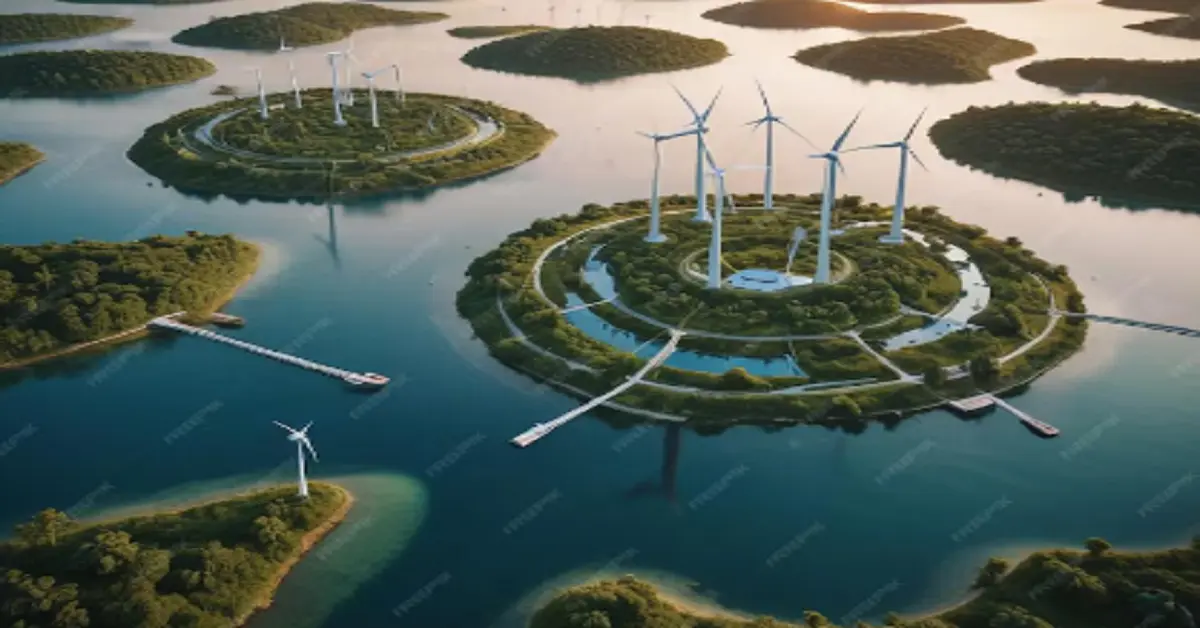Introduction
In an era where technology often seems at odds with the natural world, IBM’s innovative project, NorthPoleCastelVecchiNature, stands as a beacon of hope and a model for sustainable practices. This ambitious initiative aims to harmonize advanced technology with environmental conservation, showcasing how a global leader in technology can play a pivotal role in safeguarding our planet. By leveraging its strengths in artificial intelligence (AI), big data, and renewable energy, IBM is crafting a future where innovation and nature coexist symbiotically. This article delves deep into the various facets of ibm northpolecastelvecchinature project, exploring its goals, technologies, and potential impacts on both the environment and society.
The Genesis of IBM NorthPoleCastelVecchiNature
IBM has a rich history of innovation, but the ibm northpolecastelvecchinature project marks a significant shift toward sustainable technology. The idea originated from the increasing recognition of climate change’s impacts and the urgent need for corporations to take responsibility for their environmental footprint. This project aims not just to mitigate damage but to actively contribute to the restoration of ecosystems.
Background and Purpose of the Project
The concept of NorthPoleCastelVecchiNature emerged from collaborative efforts among scientists, environmentalists, and technologists within IBM. It aims to create a model that can be replicated globally, demonstrating that technology can enhance ecological health rather than detract from it. The project encompasses various initiatives, including habitat restoration, energy-efficient practices, and the implementation of smart technologies to monitor and protect natural resources.
How IBM Identified the Need for Sustainable Innovation in Technology
IBM’s commitment to sustainability was ignited by alarming environmental reports, including the 2018 Intergovernmental Panel on Climate Change (IPCC) report, which highlighted the imminent dangers of global warming. Recognizing the potential for technology to address these challenges, IBM set out to explore how its innovations could align with sustainability goals. NorthPoleCastelVecchiNature represents a proactive approach to developing solutions that prioritize the environment while still driving technological advancement.
IBM’s Commitment to Environmental Sustainability
IBM has long been a frontrunner in corporate sustainability. From energy-efficient data centers to green supply chain practices, the company has consistently sought ways to reduce its environmental impact. NorthPoleCastelVecchiNature is a continuation of this legacy, pushing the boundaries of what is possible when technology and nature unite.
Overview of IBM’s Historical Initiatives in Green Tech
IBM’s journey toward sustainability began decades ago. The company has implemented numerous initiatives aimed at reducing greenhouse gas emissions and promoting renewable energy usage. Some key milestones include:
- Energy Efficiency: IBM’s data centers are designed to minimize energy consumption, incorporating advanced cooling technologies and power management systems.
- Green Supply Chain: The company works with suppliers to ensure sustainable practices throughout the supply chain, focusing on reducing waste and emissions.
- Corporate Responsibility: IBM’s Corporate Environmental Affairs department is dedicated to driving sustainability initiatives across all levels of the organization.
Strategic Goals for Reducing Environmental Impact
IBM’s strategic goals are ambitious, aiming for net-zero greenhouse gas emissions by 2030. NorthPoleCastelVecchiNature plays a crucial role in achieving this goal by serving as a testing ground for new sustainable technologies and practices. Through this project, IBM aims to demonstrate that sustainable innovation is not only achievable but can also be economically viable.
Understanding Technology’s Role in Conservation
As the world grapples with the consequences of climate change, the role of technology in conservation has never been more critical. IBM NorthPoleCastelVecchiNature seeks to redefine this role by integrating cutting-edge technologies into conservation practices.
The Evolving Role of Tech in Preserving Natural Ecosystems
Technology is no longer viewed as an enemy of the environment; instead, it has become a powerful ally in the fight against ecological degradation. From drones monitoring wildlife to AI predicting environmental changes, technology offers unprecedented tools for conservationists. IBM aims to harness these tools to create a more sustainable future through NorthPoleCastelVecchiNature.
How IBM Aims to Integrate Sustainable Tech Practices with Nature
The integration of technology into natural environments requires careful consideration and planning. IBM’s approach involves:
- Developing Smart Technologies: Utilizing IoT devices to gather data on local ecosystems, helping monitor biodiversity and natural resource use.
- Creating Sustainable Infrastructure: Designing buildings and facilities that blend seamlessly into their natural surroundings, minimizing disruption to local wildlife.
- Fostering Community Engagement: Working with local communities to educate them about the importance of sustainability and involving them in conservation efforts.
Core Innovations of IBM NorthPoleCastelVecchiNature
At the heart of NorthPoleCastelVecchiNature lies a series of innovative solutions designed to tackle pressing environmental challenges. These innovations are not only groundbreaking but also serve as practical models for future sustainability efforts.
Technological Advancements in Renewable Energy and Conservation
IBM is focusing on several technological advancements within the NorthPoleCastelVecchiNature project, including:
- Solar and Wind Energy: The project employs renewable energy sources, reducing reliance on fossil fuels and minimizing carbon footprints.
- Energy Storage Solutions: Advanced battery technologies help store excess energy generated from renewable sources for later use, ensuring a stable energy supply.
Notable Environmental Solutions Within the Project
In addition to renewable energy, NorthPoleCastelVecchiNature explores various environmental solutions, such as:
- Carbon Capture Technologies: Developing systems to capture and sequester carbon dioxide emissions, contributing to climate change mitigation.
- Biodiversity Monitoring Systems: Implementing AI-driven systems to track local wildlife populations and assess ecosystem health, enabling proactive conservation efforts.
Artificial Intelligence and Machine Learning Applications
One of the standout features of IBM NorthPoleCastelVecchiNature is its extensive use of artificial intelligence and machine learning. These technologies are vital for making sense of the vast amounts of data collected from natural ecosystems.
How AI Contributes to Ecosystem Monitoring
AI algorithms can analyze complex datasets to identify trends and anomalies that human analysts might overlook. For instance, AI can predict shifts in wildlife populations based on environmental changes, allowing conservationists to respond quickly.
IBM’s AI-Driven Conservation Models
IBM has developed various AI models specifically tailored for conservation efforts. These include:
- Predictive Analytics Models: Forecasting environmental changes based on historical data, enabling proactive management strategies.
- Image Recognition Systems: Using machine learning to analyze images captured by cameras in natural habitats, helping identify species and monitor their health.
Harnessing Big Data for Environmental Insights
The power of big data cannot be overstated, especially in the context of environmental conservation. IBM NorthPoleCastelVecchiNature leverages big data analytics to drive informed decision-making and optimize conservation strategies.
Data Collection, Analysis, and Application
Data is collected through a variety of sources, including satellite imagery, IoT sensors, and citizen science initiatives. IBM then employs advanced analytics to interpret this data, extracting valuable insights about local ecosystems.
Key Environmental Patterns Identified Through Big Data Analytics
Through big data analytics, IBM has been able to identify key patterns, such as:
- Habitat Changes: Understanding how climate change affects local habitats and identifying areas at risk of degradation.
- Species Behavior: Analyzing how different species respond to environmental changes, providing critical insights for conservation efforts.
Renewable Energy Integration in IBM’s Project
Renewable energy is a cornerstone of the NorthPoleCastelVecchiNature project. IBM recognizes that transitioning to sustainable energy sources is essential for reducing the overall carbon footprint of its operations.
Types of Renewable Energy Utilized
IBM employs a diverse array of renewable energy sources within the project, including:
- Solar Power: Installing solar panels to harness sunlight for electricity generation.
- Wind Energy: Utilizing wind turbines to capture energy from wind currents, further diversifying the energy mix.
Energy Efficiency Measures and Their Impact
Energy efficiency is a critical component of the project. IBM has implemented several measures to optimize energy use, such as:
- Smart Grid Technologies: Developing intelligent energy systems that monitor and manage energy consumption in real-time.
- Building Design Innovations: Creating energy-efficient buildings that minimize energy use while maximizing comfort and functionality.
Local Ecosystem Collaboration and Preservation
The success of NorthPoleCastelVecchiNature hinges on collaboration with local ecosystems and communities. IBM understands that working together is vital for achieving sustainable outcomes.
Environmental Impact Studies Conducted by IBM
Before initiating any project activities, IBM conducts comprehensive environmental impact studies to assess potential effects on local ecosystems. These studies inform decision-making and help identify areas for conservation.
Working with Communities and Local Agencies for Sustainable Outcomes
IBM actively engages with local communities and environmental agencies to foster collaboration. This approach ensures that conservation efforts are culturally sensitive and aligned with the needs of local populations.
Challenges in Combining Technology with Nature
While the potential benefits of combining technology with nature are vast, several challenges must be addressed to ensure successful implementation.
Technical, Ethical, and Environmental Obstacles
The challenges include:
- Technological Limitations: Ensuring that technologies are suitable for specific ecosystems and do not disrupt natural processes.
- Ethical Considerations: Balancing technological advancements with ethical concerns about wildlife and habitat preservation.
IBM’s Approach to Addressing These Challenges
IBM is committed to overcoming these challenges through rigorous research, stakeholder engagement, and adaptive management practices. The company continuously seeks feedback from environmental experts and local communities to refine its approach.
Potential Environmental Benefits and Broader Impact
The potential environmental benefits of the NorthPoleCastelVecchiNature project are significant. By implementing innovative technologies and practices, IBM aims to make a lasting positive impact on ecosystems.
Positive Impacts on Ecosystems and Biodiversity
Some anticipated benefits include:
- Habitat Restoration: Actively restoring damaged habitats to enhance biodiversity and promote ecological balance.
- Wildlife Conservation: Protecting endangered species through targeted conservation efforts and habitat protection.
Societal Benefits of IBM’s Environmental Projects
Beyond environmental impacts, the project is expected to yield societal benefits, such as:
- Job Creation: Developing new job opportunities in the green technology sector and conservation fields.
- Community Engagement: Empowering local communities to participate in conservation efforts and promoting environmental stewardship.
IBM’s Partnerships and Collaborations
Collaboration is a crucial element of the NorthPoleCastelVecchiNature project. IBM recognizes that partnerships enhance the effectiveness of sustainability initiatives.
Key Alliances Supporting the NorthPoleCastelVecchiNature Project
IBM has formed alliances with various organizations, including:
- Environmental NGOs: Partnering with non-governmental organizations to leverage their expertise in conservation and community engagement.
- Academic Institutions: Collaborating with universities to conduct research and develop innovative solutions for environmental challenges.
How Collaborative Efforts Enhance Project Success
Through partnerships, IBM can access a wealth of knowledge, resources, and networks. These collaborations foster innovation and ensure that conservation efforts are grounded in scientific research and community needs.
Future Implications for Technology and Sustainability
As IBM continues to advance its NorthPoleCastelVecchiNature initiative, the implications for technology and sustainability are profound. The project serves as a model for other organizations looking to integrate sustainability into their operations.
The Potential of IBM’s Model as a Blueprint for Other Tech Firms
IBM’s approach demonstrates that technology can drive environmental sustainability, encouraging other tech companies to adopt similar practices. The lessons learned from NorthPoleCastelVecchiNature can inspire a new wave of green innovation across industries.
How IBM’s Efforts Can Influence Tech Industry Standards
By leading by example, IBM has the potential to influence industry standards regarding sustainability. The company’s commitment to environmentally responsible practices can set a precedent for others to follow, creating a ripple effect throughout the tech sector.
IBM’s Vision for Sustainable Technology
IBM envisions a future where technology plays a pivotal role in environmental sustainability. The NorthPoleCastelVecchiNature project is a key part of this vision, representing a commitment to creating a more sustainable world.
Long-Term Goals for IBM’s Environmental Initiatives
IBM aims to expand its sustainability initiatives beyond NorthPoleCastelVecchiNature, focusing on:
- Continued Innovation: Investing in research and development for new sustainable technologies.
- Global Collaboration: Engaging with governments and organizations worldwide to promote sustainability efforts.
Anticipated Future Projects Aligned with Sustainable Technology
Looking ahead, ibm northpolecastelvecchinature plans to launch additional projects that align with its commitment to sustainability. These initiatives will further explore the integration of technology and nature, creating innovative solutions for pressing environmental challenges.
Conclusion
IBM NorthPoleCastelVecchiNature exemplifies the potential for technology to support environmental sustainability. By blending advanced technologies with conservation efforts, IBM is paving the way for a future where innovation and nature thrive together. The project serves as a powerful reminder of the impact that responsible corporate actions can have on the planet. As IBM continues to push the boundaries of what is possible, the NorthPoleCastelVecchiNature initiative stands as a model for others to emulate, showcasing the transformative power of technology in creating a more sustainable world.



